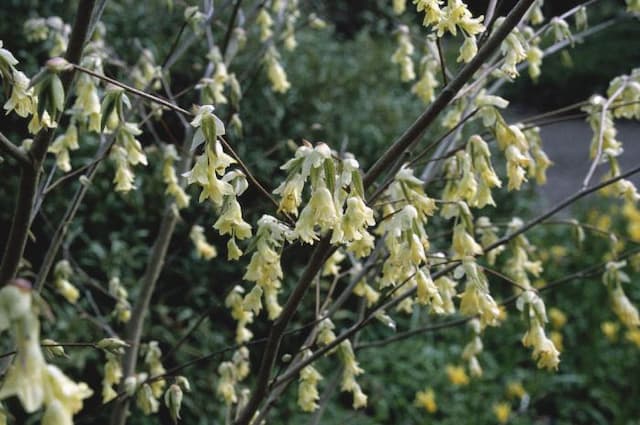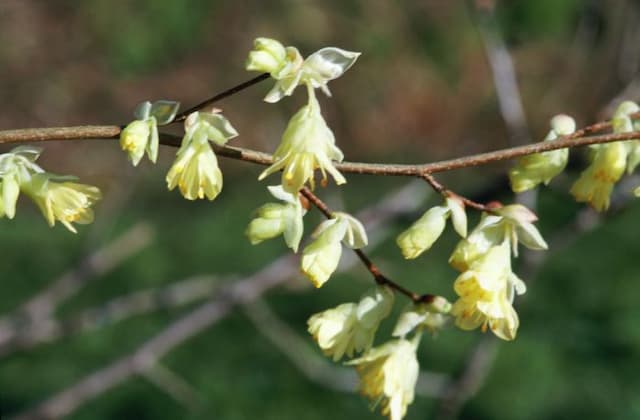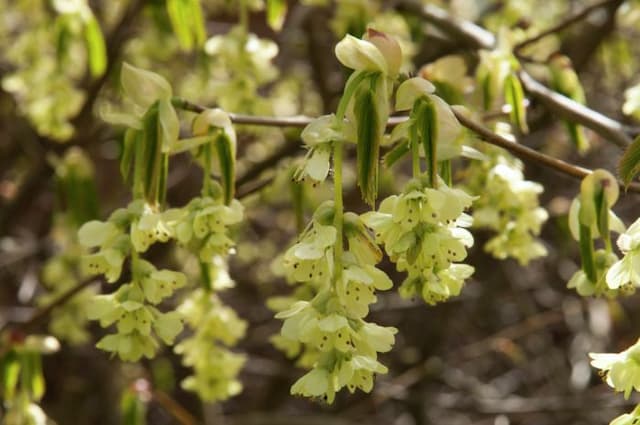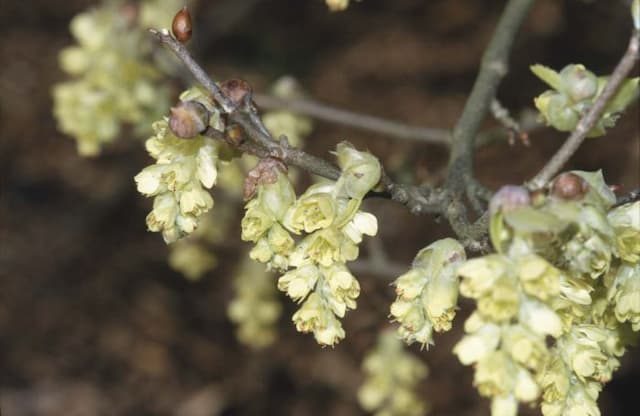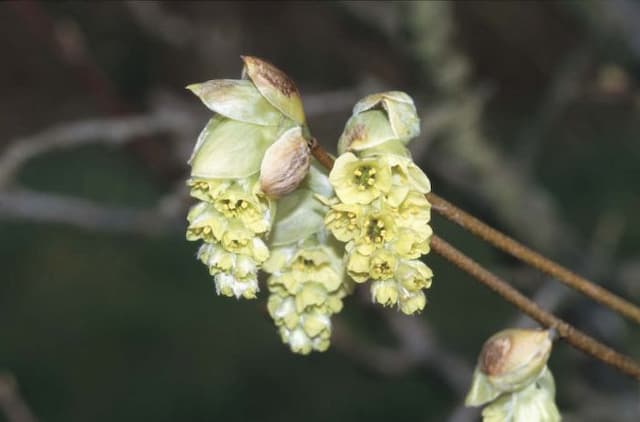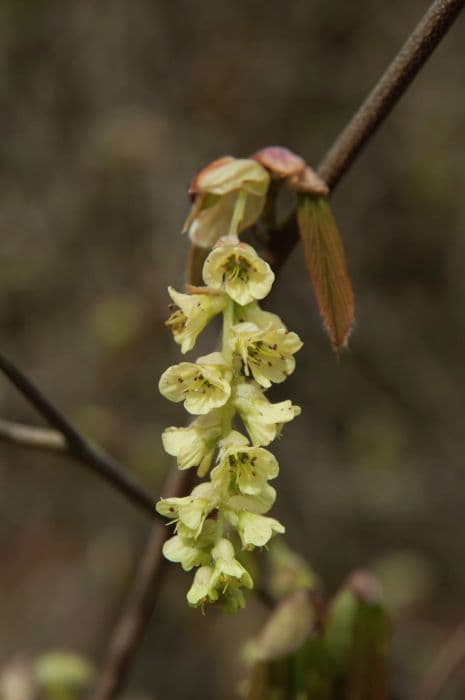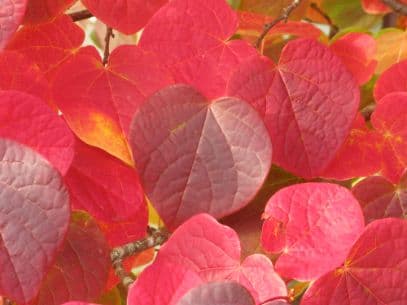American Sweetgum Liquidambar styraciflua 'Gum Ball'
ABOUT
The Sweetgum 'Gum Ball' is a distinctive and attractive plant, renowned for its unique spherical shape that resembles a ball. This ornamental tree is a cultivar known for its dazzling foliage, which undergoes dramatic transitions throughout the seasons. The leaves are star-shaped, typically bearing five to seven pointed lobes, and they exhibit a glossy green color during the warmer months. As the seasons change, the foliage transforms into a spectacular display of vibrant hues, ranging from fiery reds and oranges to deep purples, providing a breathtaking palette that enriches the autumn landscape. One of the most striking features of the Sweetgum 'Gum Ball' is the spiky, round seed balls it produces, which hang from the branches like decorative ornaments. These seed balls add textural interest to the tree and persist into the winter, long after the leaves have fallen, offering visual appeal in the otherwise barren months. The bark of this tree is also noteworthy, as it develops furrowed ridges, creating an intricate pattern that adds to the overall visual interest of the plant. Despite the elimination of details regarding its dimensions, the Sweetgum 'Gum Ball' is a plant that captivates onlookers with its year-round beauty and spherical form.
About this plant
 Names
NamesSynonyms
American Sweetgum, Redgum, Sweetgum, Satin-Walnut, Star-Leaved Gum, Alligator-Wood, Gum Tree
Common names
Liquidambar styraciflua
 Toxicity
ToxicityTo humans
The Sweetgum tree does not have significant toxicity to humans. However, consuming parts of Sweetgum, especially in large quantities, may cause digestive discomfort, such as nausea or diarrhea.
To pets
The Sweetgum tree is not known to be highly toxic to pets, but consuming parts of the tree, like the spiky seed pods, can potentially cause gastrointestinal upset or blockages, especially in smaller animals. Signs of distress may include vomiting, drooling, lack of appetite, or difficulty defecating.
 Characteristics
CharacteristicsLife cycle
Perennials
Foliage type
Deciduous
Color of leaves
Green
Height
6 feet (1.8 meters)
Spread
6 feet (1.8 meters)
Plant type
Tree
Hardiness zones
5
Native area
North America
Benefits
 General Benefits
General Benefits- Aesthetic Appeal: The Sweetgum 'Gum Ball' adds visual interest to landscapes with its unique, dense, round-shaped canopy and glossy green leaves.
- Seasonal Color: This plant provides impressive fall color, with leaves turning vibrant shades of red, orange, and purple.
- Drought Tolerance: Once established, it is relatively drought-tolerant, making it suitable for regions with periodic water scarcity.
- Wildlife Habitat: Provides food and shelter for various birds and small mammals, enhancing biodiversity.
- Adaptable: The Sweetgum 'Gum Ball' can adapt to a wide range of soils, from well-drained acidic to slightly alkaline.
- Compact Size: With a smaller, more manageable size compared to the typical Sweetgum, it's suitable for smaller gardens or limited spaces.
- Low Maintenance: Requires minimal pruning and care once established, which is convenient for gardeners of all skill levels.
 Medical Properties
Medical Properties- This plant is not used for medical purposes.
 Air-purifying Qualities
Air-purifying QualitiesThis plant is not specifically known for air purifying qualities.
 Other Uses
Other Uses- Liquidambar styraciflua 'Gum Ball', commonly known as Sweetgum, can be used as a natural chewing gum substitute, offering a sweet, fragrant sap when the bark is cut.
- The wood of the Sweetgum tree is useful in fine woodworking for making veneer, furniture, and cabinetry due to its attractive grain and good workability.
- The spiked gumballs that fall from the Sweetgum can be collected and used as natural mulch to deter pests and add aesthetic value to garden beds.
- These gumballs can also be used in craft projects, such as making wreaths, ornaments, or as an addition to potpourris.
- The tree's resin, historically called American storax, can be used in perfumery as a fixative or for its vanilla-like scent.
- The dense root system of the Sweetgum makes it suitable for erosion control, as it can help stabilize soil on slopes.
- In a wildlife garden, the Sweetgum tree serves as a habitat and offers a food source for various bird species that feed on its seeds.
- Due to its symmetrical shape and vibrant fall colors, the Sweetgum is used for bonsai cultivation.
- Sweetgum leaves, when decomposed, can enrich garden soil with nutrients as the leaves break down over time.
- The resin from the Sweetgum tree has been used in traditional crafts like creating small sculptures or inlay work.
Interesting Facts
 Feng Shui
Feng ShuiThe Sweetgum tree is not used in Feng Shui practice.
 Zodiac Sign Compitability
Zodiac Sign CompitabilityThe Sweetgum tree is not used in astrology practice.
 Plant Symbolism
Plant Symbolism- Change and Transformation: The Sweetgum tree, particularly noted for its star-shaped leaves, undergoes a spectacular transformation in fall as its leaves change from green to rich hues of red, purple, and gold—a symbol of change and the beauty of transformation in life.
- Longevity and Endurance: Since the Sweetgum can live for over a hundred years, it represents longevity and the ability to withstand the test of time.
- Healing: The medicinal properties once attributed to the sap, or balm, that the tree produces lends the Sweetgum a symbolic meaning of healing and protection from ailments.
- Versatility: With its wood being used for various purposes from furniture to musical instruments, the Sweetgum symbolizes versatility and adaptability.
 Water
WaterThe American Sweetgum 'Gum Ball' prefers consistent moisture and should be watered deeply every week to ten days during its growing season, depending on the weather conditions. Early morning watering is most beneficial, targeting the base of the plant to keep the foliage dry and minimize the risk of leaf diseases. Use enough water to soak the root zone, which may equate to 1 to 1.5 inches of water each time. During hot, dry periods, increase the frequency of watering but always allow the soil to dry out slightly between watering sessions. Reduce watering in the fall and winter when the tree is dormant.
 Light
LightThe American Sweetgum 'Gum Ball' thrives best in full sun conditions, which means it should receive at least six hours of direct, unfiltered sunlight every day. It can tolerate partial shade, but for optimal growth and development of its fall foliage color, a location with full sun exposure is recommended. Planting it in an open area with abundant sunlight will help ensure the health and vibrancy of the tree.
 Temperature
TemperatureThe American Sweetgum 'Gum Ball' can tolerate a wide range of temperatures and can survive minimum temperatures down to around -10 to -20 degrees Fahrenheit. However, it grows best when the temperature is between 70 and 90 degrees Fahrenheit during the growing season. This tree is hardy in USDA zones 5 through 9, and it is essential to avoid planting it in locations where temperatures drop below its cold tolerance range.
 Pruning
PruningPrune the American Sweetgum 'Gum Ball' to maintain its round shape and remove any damaged or diseased branches. The best time to prune is in late winter or early spring before new growth begins. It's usually sufficient to prune this tree every two to three years, inspecting it annually for any necessary maintenance pruning. When pruning, make clean cuts and avoid leaving stubs to promote healthy regrowth.
 Cleaning
CleaningAs needed
 Soil
SoilSweetgum 'Gum Ball' thrives in acidic to neutral soil, with an ideal pH range of 5.5 to 7.0. A peat-based soil mix with perlite and compost is beneficial, providing good drainage and aeration while retaining moisture. Regular garden soil amended with organic matter can also support its growth.
 Repotting
RepottingSweetgum 'Gum Ball' does not require frequent repotting as it is typically grown as a landscape tree. However, if grown in a container, young trees may need repotting every 2-3 years to provide adequate space for growing roots.
 Humidity & Misting
Humidity & MistingSweetgum 'Gum Ball' tolerates a wide range of humidity levels and does well in the ambient outdoor humidity. It does not have specific humidity requirements when planted in the landscape.
 Suitable locations
Suitable locationsIndoor
Keep in bright indirect light and away from drafts.
Outdoor
Plant in full sun to partial shade, moderate water.
Hardiness zone
5-9 USDA
 Life cycle
Life cycleThe American Sweetgum 'Gum Ball' starts life as a seed, which, after stratification, germinates in the spring. The seedling grows rapidly, developing into a young sapling with distinctive star-shaped leaves and a strong root system. As it matures over several years, it forms a rounded, compact crown, characteristic of the 'Gum Ball' cultivar. The tree reaches reproductive maturity, typically producing inconspicuous flowers that are followed by the notorious spiky fruit balls in the fall, which contain seeds for dispersal. As a deciduous tree, it displays a dramatic change of foliage color in autumn before shedding its leaves for winter dormancy. Over its lifespan, which can exceed 50 years under favorable conditions, it continues this annual cycle of growth, reproduction, and dormancy.
 Propogation
PropogationPropogation time
Late Winter
The Liquidambar styraciflua 'Gum Ball', commonly known as the American sweetgum, is often propagated by seed or through hardwood cuttings. The most popular method of propagation for the American sweetgum is through hardwood cuttings, generally taken in late fall or early winter when the tree is dormant. For successful propagation, cuttings should be around 6 to 8 inches long and taken from healthy, mature trees. The cut end of the cutting is dipped in a rooting hormone to encourage root growth and then placed in a mixture of sand and peat to root. Maintaining adequate moisture and warmth will help the cuttings to develop roots over several weeks, after which they can be potted or moved to a nursery bed to grow until they are robust enough to plant out.
